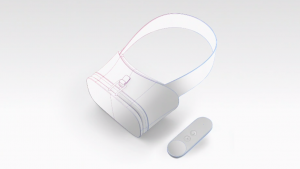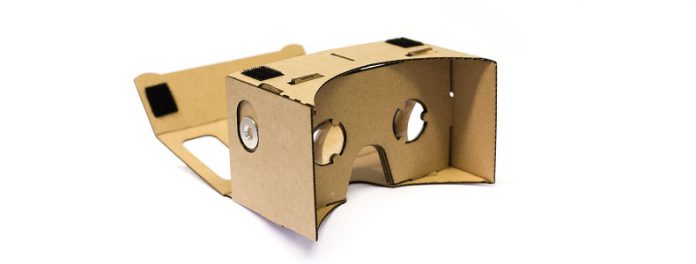The general consensus surrounding Google and its mobile virtual reality (VR) developments now that its Daydream Android-based head-mounted display (HMD) has been announced is that tech company has mobile VR under its thumb. But, Google wouldn’t have been able to get anywhere near this point in market domination without the development of the most humble of the HMDs: the Google Cardboard. VRFocus takes a look at the evolution of the HMD, and whether or not it will be able to stand on its own legs or be put to sleep by Daydream.
What happened in 2014: Google announced during that year’s Google I/O that it would be developing the cardboard HMD – something simple, easy, and perhaps with the added satisfaction of giving the finger to all of the much higher-priced VR developments happening such as the Oculus Rift. By the end of the year 500,000 were units sold.
The result: There is no doubt heads were turned and interest were sparked in the embryonic technology. It was almost laughable to think that you could get the capabilities of the much-fantasised Oculus Rift in a small cardboard box, and it was well received by the thousands. Google opened up the market wider for both consumers and developers, much more than anything Oculus VR could ever do, and allowed for the initiation of the ever-important mainstream adoption of VR.
What happened in 2015: The Cardboard was taken on board by major corporations to be branded and given away, and consumers continue to purchase themed HMDs with Cardboard supported apps being developed at a higher speed. 1 million units were sold.
The result: It was being given out left right and centre. Google Cardboard truly made a name for itself this year with the sheer amount of simple apps made by both indie developers and corporate brands.
What has happened so far in 2016: Google announced in this year’s Google I/O that 5 million units have been shipped, but the company has also revealed that Daydream, a superior mobile VR HMD, will be arriving in November. Thousands of Cardboard apps have been developed, and the Google Cardboard app on Google Play store has had 5-10 million installations.
The current result: Google is concentrating all of its efforts into the launch of Daydream, shaking up all that is known for mobile VR and challenging the Samsung Gear VR, powered by Oculus. Although it hasn’t been shared how much Daydream will cost, there are already phones being made for it, as well as many content partnerships being made. The impact that the Google Cardboard has made so far has grown by five times in the past year, but it is feared that it will soon be shunned with Daydream’s shadow cast over it by the end of the year.

What is likely to happen in 2017 – the Cardboard will continue to grow and develop on its own substance with marketers taking the malleable HMD to continue to promote products, and new potential consumers will purchase or obtain it before committing to larger investments.
The potential result: The use of the cardboard will not go away, but the momentum won’t continue to build either. The Cardboard will remain as a cheap and safe choice, especially for those who aren’t sure about the long term investment of VR. It will become a staple marketing tool, and many more homes may contain a cardboard at the rate it is being shipped out by companies.
Thinking that Google Cardboard has effectively been condemned to death by the flourishing market of mobile VR may be an easy conclusion to jump to, but it is actually far from the truth as its use continues to be redefined from its simplicity and ease of access. Although it is easily exploited, it should be respected as HMD that has taken one for the team and picked itself back up to carry on.















